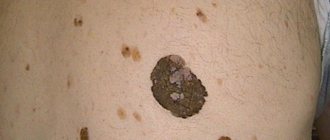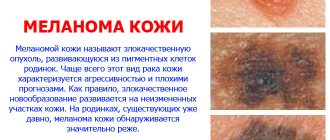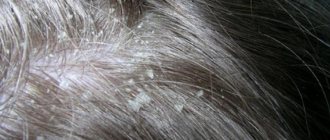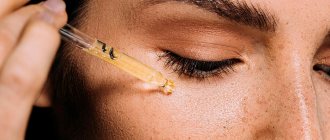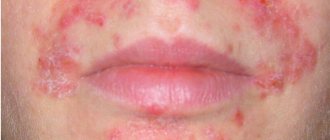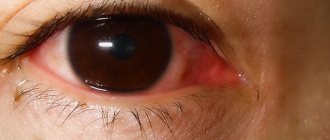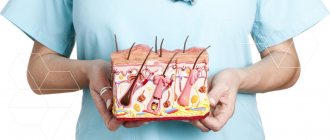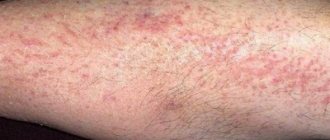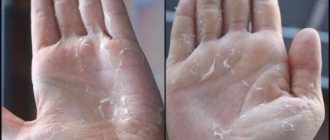A problem familiar to many women, skin pigmentation disorders, can have both internal and external causes. If in the first case complex therapy is required, then in the second case properly selected medicinal creams will be sufficient. Salon procedures can also get rid of dark and light spots on the face and body. And you can cure the effects of prolonged exposure to the sun using home methods.
For a guaranteed result, you should consult a dermatologist or cosmetologist. Self-medication can do more harm than good, especially in cases where the problem is associated with a malfunction of various body systems.
Causes of skin pigmentation
Skin pigmentation disorders can be associated with both increased melanin production and its lack. In cases of vitiligo, albinism and other diseases, the cause of changes in pigmentation is genetically determined and cannot be treated.
The lack of a sufficient amount of melanin, which causes light pigment spots on the skin, is associated with:
- Due to an autoimmune failure, melanocyte cells are destroyed by the body's immune system.
- Severe viral infections.
- Malfunction of the thyroid gland.
- Violation of the synthesis of hormones by the pituitary gland and hypothalamus.
- Prolonged stress, nervous disorders, neuroses.
- Vitamin deficiency, decreased immunity.
- Metabolic disorders of various origins.
Hypopigmentation can develop as a reaction to household chemicals, soaps, and shower gels. In people with highly sensitive skin, prolonged contact with synthetic fabrics may cause white spots on the body.
Skin injuries - injections, burns, etc. can cause changes in pigmentation. It is also caused by regular contact with toxic substances, work in hazardous industries, or in a galvanizing shop.
Why does skin pigmentation disorder occur associated with the appearance of dark spots? Its causes include:
- Prolonged exposure to direct sunlight without protective equipment.
- Solarium abuse.
- Disturbances in the production of sex hormones (in adolescence, during menopause, during pregnancy, when taking oral contraceptives).
- Long courses of antibiotics, anti-inflammatory drugs, diuretics and a number of other medications.
- Diseases of the gastrointestinal tract, liver, kidneys, viral infections.
- Nervous disorders, prolonged exposure to stressful situations.
- Failures of metabolic processes in the body.
Components of caring and decorative cosmetics can increase skin sensitivity to sunlight. For example, retinoic acid, which is often included in anti-age products. Lime or bergamot oil, found in tonics and cleansing gels produced by organic brands.
Skin hyperpigmentation can be caused by poor ecology - polluted air in big cities, the presence of hazardous industries in the city. Vitamin deficiency and reduced immunity, including those associated with HIV, lead to disturbances in the production of melanin. This condition also causes increased levels of iron in the body.
Skin pigmentation can be impaired due to the use of alcohol-containing perfumes during prolonged exposure to direct sunlight or when visiting a solarium.
Skin injuries, various dermatological diseases and their therapy can also lead to pigmentation disorders.
The causes of skin pigmentation disorders and ways to solve the problem are discussed in the video:
Risk group
All people are at risk of developing white spots, regardless of nationality or skin color, or gender. However, this type of skin pathology is most widespread in southern countries with a hot, humid climate.
Typically, white spots do not cause any inconvenience to the owner, other than aesthetic discomfort. However, occasionally there are cases when the spots change their color to dark. The upper layers of the skin are covered with whitish scales. Such spots sometimes itch and become irritated.
In tanned people, the spots stand out more strongly against the general background than in people with white skin. Areas of depigmented skin are not protected from aggressive UV irradiation. Therefore, to avoid sunburn, people with white spots are not recommended to stay in the sun for a long time during the hot season.
The most important types of skin pigmentation disorders
Pigmentation disorders, depending on the type of spots, are divided into groups:
- melasma;
- leucoderma;
- blue-gray dispigmentation.
Melasma
This is the general name for a group of diseases associated with increased melanin production. All manifestations are characterized by spots ranging from light brown to dark brown.
Diseases of the internal organs cause pigmentation disorders. As a rule, these are pathologies of the liver, kidneys, endocrine system, or the consequences of a severe form of tuberculosis.
The following types of melasma are also distinguished:
- Toxic. Most often, it is caused by prolonged, regular contact with machine oil, resins, oil, lubricants, and other industrial fluids. It manifests itself as redness, reticular areas of predominantly red pigmentation, and peeling.
- Coffee stain. It has clear boundaries and is dark brown in color. Appears at birth and does not cause any discomfort.
- Freckles. Small pigment spots of arbitrary shape, located symmetrically. Most often, fair-skinned people are prone to their appearance.
- Chloasma. This hyperpigmentation is more often observed in women and is associated with an imbalance of sex hormones. Spots may appear in pregnant women during menopause. They are characterized by a light yellow-brown color. They may disappear completely in autumn or winter.
- Lentigo. Small flat areas of hyperpigmentation caused by ultraviolet light. Also typical for older people, they arise due to problems with the liver.
Leucoderma
This group of diseases is characterized by loss of pigmentation - white spots on the skin. Depending on the nature of occurrence, the following are distinguished:
- Post-inflammatory. Develops after suffering skin diseases, for example, psoriasis, lupus. Areas of lighter skin may appear after burns or other injuries.
- Medicinal. Associated with long-term use of medications, for example, anti-inflammatory drugs of the steroid group.
- Professional. Occurs in people who have to come into contact with toxic substances for a long time.
Infectious leukoderma is classified into a separate large group. It can develop against the background of syphilis. White, lacy spots are located on the neck and do not bother the patient in any way.
Lepromatosis bacteria cause the infectious disease leprosy. One of the symptoms of which is white spots with clear boundaries. In areas with dyspigmentation, the skin becomes insensitive.
Various types of lichen are also accompanied by white spots. This is a multi-colored, white, red lichen planus.
Congenital leukoderma includes the following diseases:
- Vitiligo. White or light pink spots appear on the face, hands, and knees. They do not cause discomfort. Over time they can merge.
- Albinism. The genetically determined number of melanocytes, significantly lower than in ordinary people, leads to hypopigmentation of the skin, hair, and eyes. The disease is characterized by increased sensitivity of the eyes to light and the skin to ultraviolet radiation.
- Halo nevus. It is typical for childhood, does not require special treatment, and goes away on its own. Localized on the arms or body. It is a light brown or pink nevus surrounded by a white border, which, as a rule, is several times larger than the hyperpigmented area itself.
Blue-gray dispigmentation
What is the name of the disease in which dark blue, violet-brown pigment spots appear on the skin - nevus of Ota. It is associated with an increased number of melanocytes in the skin.
This dyspigmentation is caused by ochronosis, a hereditary disease associated with metabolic disorders.
The appearance of dark blue pigment spots is also referred to as thermal erythema. It is caused by too frequent use of heating pads and heated mattresses.
Taking certain medications can lead to the formation of blue-gray pigment spots. Occupational dyspigmentation is caused by the accumulation of heavy metals in the skin and hair.
What cosmetologists will say
If dark spots appear on the skin, you first need to be examined by a dermatologist. It is likely that you will need to consult an endocrinologist, gynecologist or gastroenterologist. If the spots on the skin are not caused by some disease, then you will need the help of a cosmetologist. To eliminate the problem, mesotherapy, chemical peeling and fractional treatment are usually used. In the future, a person predisposed to the appearance of age spots is recommended to use sunscreen cosmetics. And after some time, you may need to repeat the cosmetic procedure.
Here's what experts say about pigmentation in the video:
Prevention of occurrence
A diet rich in vitamins C, A, E, and nicotinic acid will help prevent diseases associated with changes in skin pigmentation. By including a sufficient amount of liver, carrots, fresh herbs, and fatty fish in your diet, you can eliminate vitamin A deficiency.
Ascorbic acid is found in white cabbage, green apples, black currants, citrus fruits, onions, and dried rose hips.
Oatmeal, wheat and rye bran, and flaxseed and soybean oils are rich in vitamin E. Nicotinic acid is found in fermented milk products, cheeses, eggs, and liver.
People prone to changes in skin pigmentation need to limit the consumption of salty, smoked, and sweet foods.
In the spring-summer period, to prevent skin pigmentation, you should abandon alcohol-containing perfume, replacing it with oil perfume.
For prevention, once a week you can make whitening masks, wipe your face with cucumber infusion or a decoction of dried parsley.
Main types of treatment for skin pigmentation
Freckles or age spots caused by prolonged exposure to the sun can be lightened with homemade recipes based on cucumber, parsley, and fermented milk products.
After a comprehensive diagnosis, dermatologists prescribe creams and ointments against skin pigmentation disorders containing:
- hydroquinone;
- kojic acid;
- arbutin
Courses of vitamin complexes containing large quantities of vitamin C will help get rid of pigmentation. After consultation with an endocrinologist, corticosteroid drugs may be prescribed.
In situations where skin problems are not related to the functioning of internal organs, cosmetic procedures can be used as the main therapy. They can complement treatment in case of loss of pigmentation. The phototherapy method is effective. It stimulates the production of melanin and increases the “immunity” of the skin.
Chemical peels can get rid of dark spots. Deep peeling is more effective, it allows you to get rid of even old stains.
Experts say the use of laser is effective for increased skin pigmentation. Its radiation destroys the accumulation of melanin and does not damage healthy tissue. Multiple sessions are usually required to remove large hyperpigmented lesions.
Another method of getting rid of pigment lesions is mesotherapy. The procedure allows you to reduce the production of skin color pigment. But it is effective for light, recently appeared spots.
In some cases, mechanical (diamond, coral) peelings are effective. They promote skin renewal and “remove” areas of pigmentation.
Treatment methods
Treatment of skin depigmentation manifestations is aimed at eliminating the root cause. In some situations, hypopigmentation can be managed after effective complex therapy. But in the case of albinism, hypomelanosis and vitiligo, this is not possible, since there is no etiopathogenetic therapy for these diseases.
We recommend reading
- Causes of age spots on the hands after 40 years
- How to remove pigment spots under the eyes
- Which doctor should I contact for pigmentation?
Then the treatment is aimed at eliminating pigmentary disorders using local agents used as intradermal injections:
- corticosteroids;
- preparation based on placenta extract;
- retinoids.
With vitiligo, a certain effect can be achieved by applying an iodine grid to depigmented areas and then irradiating them with ultraviolet light. Sometimes laser depigmentation is performed. Proper nutrition, vitamins, iron supplements, home remedies and cosmetic procedures play a certain role.
Recommendations from experts
In order not to provoke skin pigmentation disorders caused by exposure to ultraviolet radiation, it is necessary to use high-quality sunscreens containing UV and SPF filters.
Dermatologists recommend:
- Avoid visiting the solarium.
- In summer and spring, avoid exposure to the open sun from 11 a.m. to 4 p.m.
- During periods of high sun activity, stop taking medications that cause spots to appear.
To prevent diseases associated with skin pigmentation, pregnant women taking oral contraceptives need to limit their time in the bright sun.
Treatment of dark spots should be carried out in autumn, winter, early spring, when solar activity is low.
How to remove age spots at home, watch the video:
Prevention of the formation of age spots
Dealing with age spots is not always easy. That is why it is recommended to treat your skin with care and protect it from the occurrence of such formations. To prevent pigmentation, follow these recommendations:
- Eat more foods rich in vitamin C. These include: sauerkraut, all citrus fruits (oranges, lemons, etc.), sea buckthorn, black currants, wild garlic, dill, and so on. The vulnerability of the skin to ultraviolet radiation and other external factors depends on the sufficient amount of vitamin C in the body.
- Do not overuse foods that contain a lot of vitamin A. For example: cod liver, sweet potatoes, carrots, broccoli, and so on. The fact is that uncontrolled use of retinol increases the risk of pigmentation formation.
- Use sunscreens, fluids and other products during the warm season. If the skin is prone to pigment accumulation, it is recommended to use such products even in cloudy weather.
- Try not to be in the open sun between 11 a.m. and 3 p.m. The fact is that it is at this time that the sun's rays are most active.
- Carry out preventative procedures. For example, make homemade masks based on fermented milk products.
- Choose the right skin care products. Do not use products that cause a negative reaction on the surface being treated.
- Do not squeeze out pimples and blackheads yourself. The fact is that pigment formations most often appear on the irritated surface of the skin. It's better to go for professional cleaning or let pimples and comedones go away on their own.
- Try to be less nervous.
- Monitor the health of your reproductive, endocrine and urinary systems.
- Speed up your metabolism. To do this, eat more fruits, vegetables and clean water. Also try to eat more often, but in small portions. In addition, spices speed up metabolism well: a pinch of black pepper in a dish and cinnamon on the tip of a knife in coffee will not only improve the taste of food, but also speed up metabolism.
To speed up your metabolism, add spices to your dishes
- Do not use creams, ointments and other products with an irritating or warming effect (especially on sensitive areas of the skin).
Pigment spots, like any pathology, are easier to prevent than to treat in the future. To do this, you need to carefully monitor the condition of your skin and protect it from exposure to ultraviolet radiation. However, if formations have already appeared, carefully approach the issue of getting rid of them. First of all, consult with several cosmetologists, and only then begin active treatment. If you use home remedies or cosmetic creams, do not forget to test them for an allergic reaction.
- Author: woman
Rate this article:
- 5
- 4
- 3
- 2
- 1
(0 votes, average: 0 out of 5)
Share with your friends!
